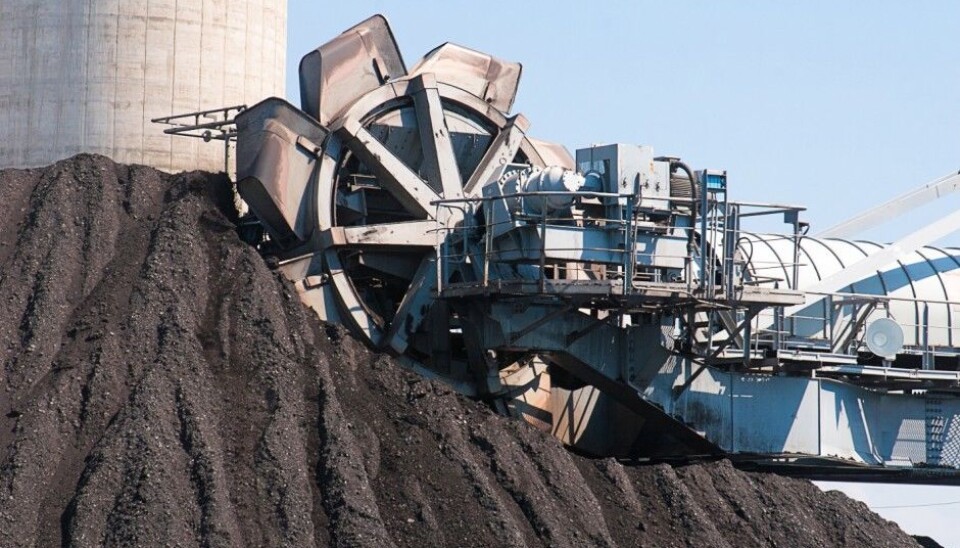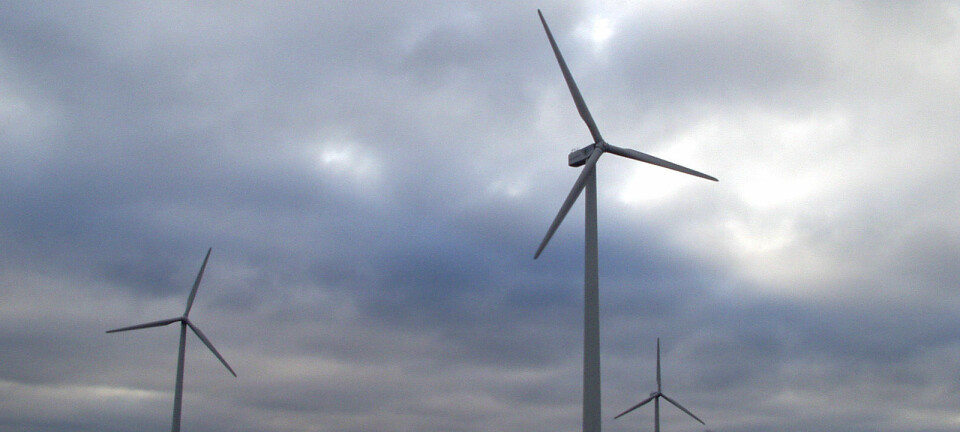An article from Norwegian SciTech News at NTNU

Anything but coal
Policymakers, industry and government officials will have to invest 2.3 trillion euros for electricity generation over the next 20 years. A new report presents the environmental costs and benefits linked to different renewable energy sources, and makes one thing abundantly clear: anything is better than coal.
Denne artikkelen er over ti år gammel og kan inneholde utdatert informasjon.
If it’s green, it’s mostly clean, according to a new, comprehensive review of renewable energy sources released today by the International Resource Panel, hosted by the United Nations Environment Programme (UNEP).
The report, Green Energy Choices: The Benefits, Risks and Trade-Offs of Low-Carbon Technologies for Electricity Production, takes a cradle-to-grave look at the environmental and health pros-and-cons of nine different renewable sources of energy. It is the first such comprehensive international report to do so.
While the report is filled with important details of the benefits and impacts of different energy choices, the bottom line is clear, says report co-author Thomas Gibon, a PhD candidate at NTNU’s Industrial Ecology Programme.
“Moving away from fossil fuels and coal will help us avoid a lot of environmental impacts, particularly from air pollution and greenhouse gases,” Gibon says.

And the difference is considerable, the report says: electricity from renewable sources emits between 90-99 percent less greenhouse gases than coal-fired plants, and causes 70-90 percent less pollution.
Gibon’s PhD research formed the foundation for the report’s analyses.
Pointing out problems to avoid them
Perhaps the most important message in the report is the most obvious: continuing with business as usual and without renewable energy use will double greenhouse gas emissions by 2050, “with serious impacts on human health and the environment,” the report says.
Nevertheless, all forms of electricity generation have their impacts, which is where the new report offers important insights for decision makers contemplating a low-carbon future.
One is that building different kinds of renewable energy installations will increase the need for materials such as steel, aluminium, copper, concrete and a variety of rare earth metals compared to “business as usual.”
There are two reasons for this, Gibon says. The first is that because most renewable energy sources run only intermittently —a wind farm may generate electricity just 20-25 per cent of the time, for example. That means each kilowatt-hour of electricity requires more infrastructure than conventional sources.
A second challenge is that at least some renewable energy installations have shorter lifespans than their conventional counterparts.
“A wind turbine may have a lifespan of 20-25 years,” Gibon said. “So all the material investments you make last 20 years, and then you have to rebuild.”
No recycling, supply chains
The demand for materials is particularly pronounced when it comes to some of the rare earths and metals that go into producing solar cells or the magnets for direct-drive wind turbines, the report notes.
These materials include neodymium, dysprosium, cadmium, tellurium, gallium, indium and selenium.
The use of these materials is relatively new, which means that there is limited or no recycling system for them, and relatively little data to estimate how big the demand for them might become, Gibon says.
“With the existing collection and recycling schemes we have now, recycling these materials is not really possible,” he said.
Nor have the supply chains for these materials been clearly identified, he said.
“Unless we figure out how to recycle these materials at a large scale this will be a problem in the future,” he said. “But we don’t have enough information to say how big a problem it will be — we don’t have enough retiring (renewable energy) power plants yet to see how it will go.”
CCS works, but consumes energy
Although it is not a renewable energy source, the researchers looked at the benefits and impacts of retrofitting coal and natural gas fired power plants with carbon capture and storage (CCS).
The good news is that CCS does cut greenhouse gas emissions from fossil fuel plants, with cuts in emissions from modern coal-fired plants of between 74-78 per cent compared to plants without emissions controls.
These cuts come at a cost, however. For one, controlling greenhouse gas emissions from coal-fired plants reduces their efficiency, because the emissions capture process requires energy.
“Running CO2 capture facilities requires an increase in energy demand of up to 10 per cent more per kilowatt hour,” Gibon said. “It’s the energy penalty problem.”
CCS also can involve the use of toxic compounds to capture CO2, which have their own impacts. Other environmental impacts include an increase in particulate matter and the emission of pollutants that can overfertilize lakes and the marine environment. All told, coal- or gas-fired systems increase pollution harmful to the environment and human health by 5-80 per cent compared to the global electricity generation mix in the year 2010, the report says.
Hydropower not always completely green
Another surprise in the report is that the impacts associated with hydropower can vary tremendously depending upon where the installation is located.
For example, a tropical hydropower installation that is very large and shallow can result in greenhouse gas emissions when the vegetation that is flooded dies and decomposes. This can release CO2 or methane, CH4, a greenhouse gas that is 30 times more potent than CO2.
However, because these emissions come from biological sources, “maybe all we are doing is accelerating the biological process, since eventually that vegetation will die and rot,” Gibon said.
Nevertheless, new hydropower installations can have other impacts, including displacing human populations and destroying riparian areas along rivers that are flooded by the reservoir, he said.
Apples to apples
Gibon has been working on the underpinnings for the report for almost 4 years, the entire length of his doctoral research at NTNU.
One of the reasons for this is the enormous complexity involved in compiling available information and making it comparable. The report relies on something called life-cycle assessments, in which all of the impacts of the technology—starting with its construction or manufacture, extending through its useful life and ending with its decommissioning—are considered so that the true environmental costs of the technology can be estimated.
The problem is that these assessments, called LCA, may not be comparable because they are often for different areas of the globe, or span different time periods, Gibon said. Many studies were also focused on greenhouse gas emissions, but the authors of the report also wanted to look at other environmental and human health effects, he said.
In the end, Gibon and his colleagues were able to make all of the results from the different studies of renewable energy consistent, so the report does compare “apples to apples.”
Commenting on the study’s release, Achim Steiner, Executive Director of UNEP, said it was important for policymakers to have access to this comparative analysis.
“These technologies will be critical to keeping global warming under 2C, but we need to remain cognizant of their effects on the environment, such as their higher use of metals like steel and copper in manufacturing. As countries look to meet their energy needs while combating climate change, this report can help identify the most sustainable mix of energy technologies to accomplish that goal,” Steiner said.
-------------------------------------
Read the Norwegian version of this article at forskning.no

































